-
 Bitcoin
Bitcoin $83,218.0125
-2.60% -
 Ethereum
Ethereum $1,586.4638
-3.87% -
 Tether USDt
Tether USDt $0.9996
-0.01% -
 XRP
XRP $2.0896
-3.40% -
 BNB
BNB $582.4772
-2.57% -
 Solana
Solana $127.0813
-4.36% -
 USDC
USDC $0.9999
0.00% -
 Dogecoin
Dogecoin $0.1619
-4.07% -
 TRON
TRON $0.2526
2.38% -
 Cardano
Cardano $0.6319
-4.54% -
 UNUS SED LEO
UNUS SED LEO $9.3069
-0.12% -
 Chainlink
Chainlink $12.4967
-5.42% -
 Avalanche
Avalanche $19.4394
-5.00% -
 Stellar
Stellar $0.2352
-4.53% -
 Sui
Sui $2.2092
-7.00% -
 Shiba Inu
Shiba Inu $0.0...01198
-4.71% -
 Toncoin
Toncoin $2.8160
-6.87% -
 Hedera
Hedera $0.1644
-6.43% -
 Bitcoin Cash
Bitcoin Cash $342.1859
-0.86% -
 Litecoin
Litecoin $77.0418
-2.30% -
 Polkadot
Polkadot $3.6299
-2.85% -
 Dai
Dai $1.0000
-0.02% -
 Bitget Token
Bitget Token $4.2733
-3.34% -
 Hyperliquid
Hyperliquid $15.0467
-9.01% -
 Pi
Pi $0.7284
-1.41% -
 Ethena USDe
Ethena USDe $0.9989
-0.01% -
 Monero
Monero $202.5557
-2.26% -
 Uniswap
Uniswap $5.2896
-4.24% -
 OKB
OKB $52.8982
-1.52% -
 Pepe
Pepe $0.0...07146
-4.33%
How to optimize the performance of blockchain network?
To optimize blockchain performance, implement sharding, use layer 2 solutions, choose efficient consensus mechanisms, upgrade network infrastructure, and enhance smart contract efficiency.
Apr 13, 2025 at 12:08 am
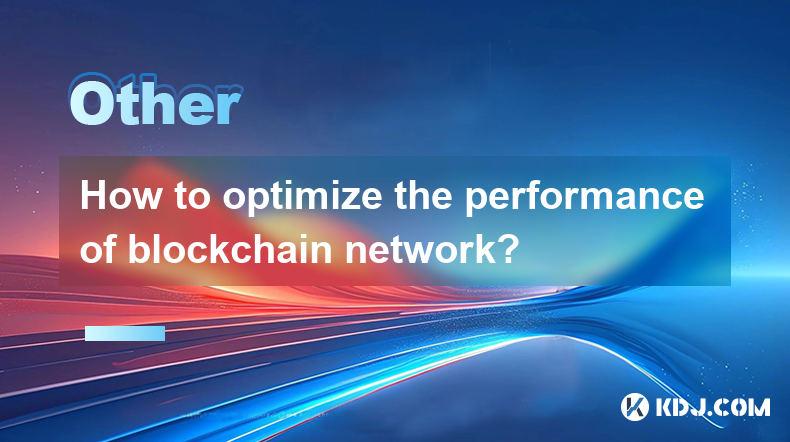
How to Optimize the Performance of Blockchain Network?
Blockchain technology, renowned for its decentralized and secure nature, is increasingly being adopted across various industries. However, as with any technology, optimizing the performance of a blockchain network is crucial for ensuring efficiency and scalability. This article delves into several strategies and techniques that can be employed to enhance the performance of blockchain networks.
Understanding Blockchain Performance Metrics
Before delving into optimization techniques, it is essential to understand the key performance metrics of a blockchain network. These metrics include transaction throughput, which measures the number of transactions processed per second; latency, which indicates the time taken for a transaction to be confirmed; and scalability, which refers to the network's ability to handle growth in transaction volume. By monitoring these metrics, one can identify areas that require optimization.
Implementing Sharding
Sharding is a technique that involves dividing the blockchain into smaller, more manageable parts called shards. Each shard contains its own subset of data and can process transactions independently. This approach significantly increases the overall transaction throughput of the network. To implement sharding:
- Choose a sharding mechanism suitable for your blockchain, such as state sharding or transaction sharding.
- Design the shard structure, ensuring that each shard can operate autonomously but still communicate with others.
- Implement cross-shard communication protocols to ensure data consistency across the network.
- Test the sharding implementation thoroughly to ensure it meets the desired performance improvements without compromising security.
Utilizing Layer 2 Solutions
Layer 2 solutions, such as sidechains and off-chain transactions, can help alleviate the burden on the main blockchain, thereby improving its performance. These solutions process transactions outside the main chain and then settle them on the blockchain, reducing congestion and increasing throughput. To utilize layer 2 solutions:
- Identify the type of layer 2 solution that best fits your needs, such as payment channels or state channels.
- Integrate the chosen layer 2 solution into your blockchain infrastructure.
- Ensure that the layer 2 solution is compatible with existing smart contracts and decentralized applications (dApps).
- Conduct extensive testing to verify that the layer 2 solution enhances performance without introducing vulnerabilities.
Optimizing Consensus Mechanisms
The consensus mechanism is a critical component of a blockchain network, as it determines how nodes agree on the validity of transactions. Different consensus mechanisms, such as Proof of Work (PoW), Proof of Stake (PoS), and Delegated Proof of Stake (DPoS), have varying impacts on performance. By choosing a more efficient consensus mechanism, you can significantly improve the network's transaction processing speed and energy efficiency. To optimize the consensus mechanism:
- Evaluate the current consensus mechanism's performance and identify its limitations.
- Research alternative consensus mechanisms that offer better performance characteristics.
- Implement the chosen consensus mechanism, ensuring it aligns with the network's security and decentralization requirements.
- Monitor the performance of the new consensus mechanism and make adjustments as needed.
Enhancing Network Infrastructure
The underlying network infrastructure plays a crucial role in the performance of a blockchain. By upgrading hardware and optimizing network configurations, you can enhance the overall efficiency of the blockchain. Steps to enhance network infrastructure include:
- Upgrade server hardware to increase processing power and storage capacity.
- Implement load balancing to distribute traffic evenly across nodes.
- Optimize network protocols to reduce latency and improve data transmission speeds.
- Use content delivery networks (CDNs) to cache frequently accessed data and reduce the load on the blockchain.
Improving Smart Contract Efficiency
Smart contracts are self-executing programs that run on the blockchain, and their efficiency can significantly impact the network's performance. By optimizing smart contract code and reducing unnecessary computations, you can decrease the time and resources required to execute transactions. To improve smart contract efficiency:
- Analyze existing smart contracts to identify performance bottlenecks.
- Refactor smart contract code to eliminate redundant operations and optimize logic.
- Use gas optimization techniques to minimize the cost of executing smart contracts.
- Implement off-chain computations where possible to reduce the load on the blockchain.
Monitoring and Continuous Improvement
Optimization of a blockchain network is an ongoing process that requires continuous monitoring and improvement. By regularly assessing performance metrics and implementing iterative enhancements, you can ensure that the network remains efficient and scalable. Steps for monitoring and continuous improvement include:
- Set up monitoring tools to track key performance indicators in real-time.
- Conduct regular performance audits to identify areas for improvement.
- Implement feedback loops to gather insights from network participants and stakeholders.
- Continuously test and refine optimization strategies to adapt to changing network conditions.
Frequently Asked Questions
Q: Can optimization strategies vary depending on the type of blockchain (public vs. private)?
A: Yes, optimization strategies can vary significantly between public and private blockchains. Public blockchains, which are open to anyone, often prioritize decentralization and security, which can impact performance. In contrast, private blockchains, which are controlled by a single entity or consortium, can implement more centralized optimization techniques to improve efficiency. For example, a private blockchain might use a more efficient consensus mechanism like Raft or BFT, whereas a public blockchain might stick with PoW or PoS for security reasons.
Q: How does the choice of programming language affect blockchain performance?
A: The choice of programming language can significantly impact blockchain performance. Languages like Solidity, commonly used for Ethereum smart contracts, are designed to be gas-efficient but may have limitations in terms of performance. In contrast, languages like Rust or Go, used in blockchains like Solana and Hyperledger Fabric, offer better performance due to their low-level memory management and concurrency features. Choosing the right programming language can optimize the execution of smart contracts and overall network performance.
Q: What role do node operators play in optimizing blockchain performance?
A: Node operators play a crucial role in optimizing blockchain performance. They are responsible for maintaining and upgrading the hardware and software of nodes, ensuring they operate efficiently. Node operators can also participate in governance decisions that affect the choice of consensus mechanisms and other optimization strategies. By actively managing and optimizing their nodes, operators contribute to the overall performance and scalability of the blockchain network.
Q: Are there any risks associated with implementing optimization strategies?
A: Yes, there are risks associated with implementing optimization strategies. For example, changing the consensus mechanism or introducing sharding can potentially introduce security vulnerabilities if not implemented correctly. Additionally, layer 2 solutions might lead to fragmentation of the network if not well-integrated. It is crucial to conduct thorough testing and security audits before implementing any optimization strategy to mitigate these risks.
Disclaimer:info@kdj.com
The information provided is not trading advice. kdj.com does not assume any responsibility for any investments made based on the information provided in this article. Cryptocurrencies are highly volatile and it is highly recommended that you invest with caution after thorough research!
If you believe that the content used on this website infringes your copyright, please contact us immediately (info@kdj.com) and we will delete it promptly.
- BetMGM Bonus Code CUSE150: Unlock $150 or $1500 First Bet Match
- 2025-04-14 06:35:13
- Fartcoin (FART) Cryptocurrency Surges 84% as Market Turbulence Reaches New Heights
- 2025-04-14 06:35:13
- Bryce Paul Reviews His #1 AI Crypto Pick That Could Outpace Even Nvidia's Explosive Run in 2025
- 2025-04-14 06:30:13
- Mantra Tokens Crash, $5 Billion Wiped Off
- 2025-04-14 06:30:13
- Mantra, Once a Beacon of Hope in RWA Tokenization, Collapses Overnight, Losing 90% of Its Market Cap
- 2025-04-14 06:25:12
- Here's Why Mantra (OM) Price Crashed 90%
- 2025-04-14 06:25:12
Related knowledge
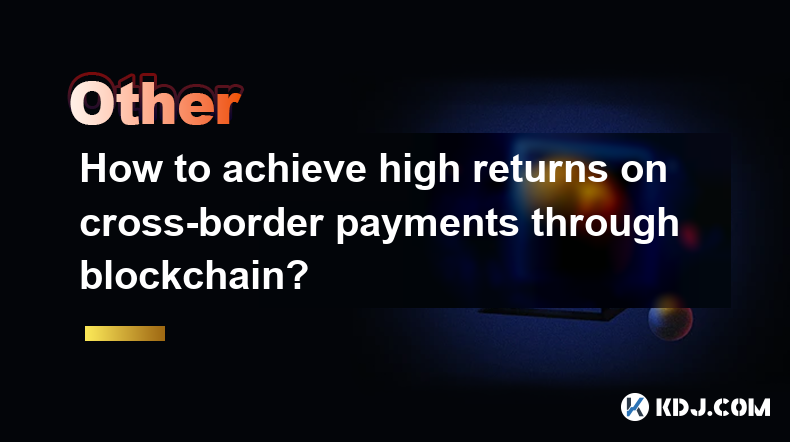
How to achieve high returns on cross-border payments through blockchain?
Apr 12,2025 at 05:57pm
How to Achieve High Returns on Cross-Border Payments Through Blockchain? Cross-border payments have traditionally been plagued by high fees, slow processing times, and a lack of transparency. However, the advent of blockchain technology offers a promising solution to these issues, potentially allowing for high returns on such transactions. Blockchain te...
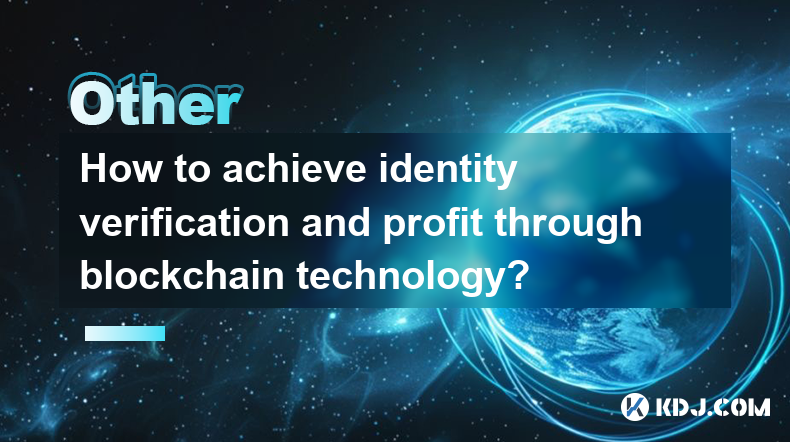
How to achieve identity verification and profit through blockchain technology?
Apr 12,2025 at 10:35pm
Achieving identity verification and profit through blockchain technology involves understanding the underlying principles of blockchain, exploring specific applications that facilitate identity verification, and leveraging these technologies to generate profit. This article will delve into these aspects, providing a comprehensive guide on how to navigat...
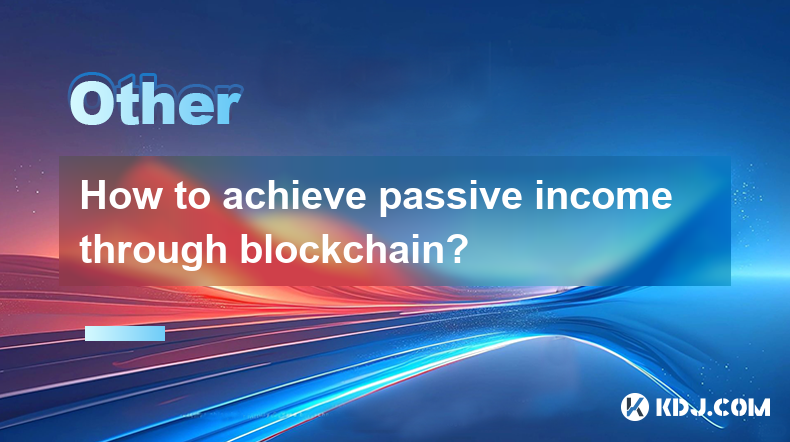
How to achieve passive income through blockchain?
Apr 13,2025 at 09:00pm
Achieving passive income through blockchain technology has become an increasingly popular strategy among cryptocurrency enthusiasts and investors. Blockchain technology offers a decentralized platform that can be utilized to generate income with minimal ongoing effort. This article will explore various methods through which you can achieve passive incom...
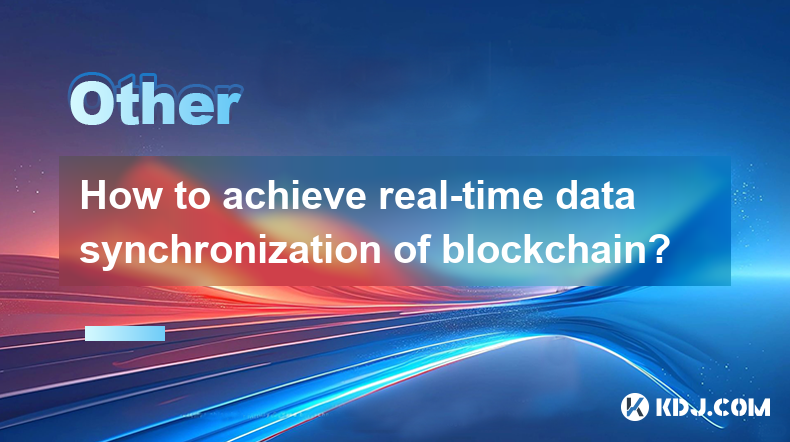
How to achieve real-time data synchronization of blockchain?
Apr 14,2025 at 06:57am
Achieving real-time data synchronization in blockchain is crucial for ensuring that all participants in the network have access to the most up-to-date information. This process involves multiple steps and technologies to ensure that data is transmitted and validated quickly and accurately across the network. In this article, we will explore the methods ...

How to achieve true ownership of virtual assets in blockchain games?
Apr 13,2025 at 03:35pm
Achieving true ownership of virtual assets in blockchain games is a topic that has garnered significant attention within the cryptocurrency community. The promise of blockchain technology lies in its ability to provide verifiable ownership and control over digital assets, which is particularly appealing in the gaming sector where players seek to own, tr...
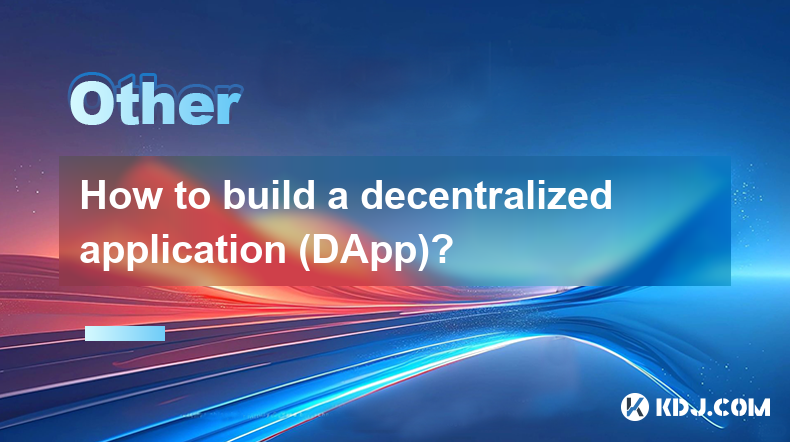
How to build a decentralized application (DApp)?
Apr 14,2025 at 01:01am
Building a decentralized application (DApp) involves several key steps and considerations that are crucial for ensuring the application's functionality, security, and decentralization. This guide will walk you through the process of creating a DApp, from conceptualization to deployment. Understanding the Basics of DAppsBefore diving into the development...

How to achieve high returns on cross-border payments through blockchain?
Apr 12,2025 at 05:57pm
How to Achieve High Returns on Cross-Border Payments Through Blockchain? Cross-border payments have traditionally been plagued by high fees, slow processing times, and a lack of transparency. However, the advent of blockchain technology offers a promising solution to these issues, potentially allowing for high returns on such transactions. Blockchain te...

How to achieve identity verification and profit through blockchain technology?
Apr 12,2025 at 10:35pm
Achieving identity verification and profit through blockchain technology involves understanding the underlying principles of blockchain, exploring specific applications that facilitate identity verification, and leveraging these technologies to generate profit. This article will delve into these aspects, providing a comprehensive guide on how to navigat...

How to achieve passive income through blockchain?
Apr 13,2025 at 09:00pm
Achieving passive income through blockchain technology has become an increasingly popular strategy among cryptocurrency enthusiasts and investors. Blockchain technology offers a decentralized platform that can be utilized to generate income with minimal ongoing effort. This article will explore various methods through which you can achieve passive incom...

How to achieve real-time data synchronization of blockchain?
Apr 14,2025 at 06:57am
Achieving real-time data synchronization in blockchain is crucial for ensuring that all participants in the network have access to the most up-to-date information. This process involves multiple steps and technologies to ensure that data is transmitted and validated quickly and accurately across the network. In this article, we will explore the methods ...

How to achieve true ownership of virtual assets in blockchain games?
Apr 13,2025 at 03:35pm
Achieving true ownership of virtual assets in blockchain games is a topic that has garnered significant attention within the cryptocurrency community. The promise of blockchain technology lies in its ability to provide verifiable ownership and control over digital assets, which is particularly appealing in the gaming sector where players seek to own, tr...

How to build a decentralized application (DApp)?
Apr 14,2025 at 01:01am
Building a decentralized application (DApp) involves several key steps and considerations that are crucial for ensuring the application's functionality, security, and decentralization. This guide will walk you through the process of creating a DApp, from conceptualization to deployment. Understanding the Basics of DAppsBefore diving into the development...
See all articles























































































